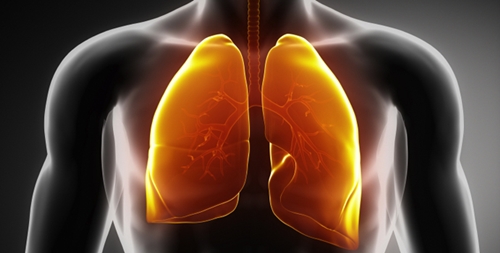5 April 2017. A delivery mechanism is being developed to package cancer drugs in a nanoscale precursor state that reacts only in tumor regions, to protect against adverse effects. Results from a test of this drug-delivery technology by researchers at Oregon State University in Portland and Corvallis appear in the 10 May 2017 issue of Journal of Controlled Release (paid subscription required).
The team led by Oregon State pharmacy professor Adam Alani is seeking safer methods for treating cancer other than conventional chemotherapy that attacks cancer cells, but also healthy proliferating cells and tissue in the body, causing adverse and often severe reactions. One technique for minimizing these adverse effects is to deliver the drugs in an inactive state, with the active chemotherapy released only in the tumor and its supporting environment.
Alani and colleagues are testing a technology by Cascade Prodrug Inc. in Eugene, Oregon that develops a formulation of the chemotherapy drug vinblastine, to treat several solid tumors and lymphomas. Cascade Prodrug’s techniques combine a precursor of vinblastine code-named CPD100 broken down into nanoparticles in liposomes, tiny natural-oil bubbles similar to surfaces of cells. This formulation is designed to keep vinblastine in an inactive state until it reaches tumor regions, where it reacts with the low-oxygen environment of the tumor, known as hypoxia.
“One reason these cancers become very aggressive is the development of this hypoxia,” says Alani in a university statement. “Since the late 1990s, researchers have been trying to take advantage of the hypoxia.” The Cascade Prodrug technology tries to do just that, keeping vinblastine in its precursor or prodrug state until it comes into contact with low-oxygen environments, in which CPD100 metabolizes into vinblastine.
The Oregon State team evaluated two variations of Cascade Prodrug’s CPD100-liposome treatments, one with a coating of biocompatible polymer polyethylene glycol or PEG used in many drugs, and one without a coating. The researchers first determined a maximum safe dose of the drugs in lab cultures, before giving them to lab animals.
In tests with lab mice induced with non-small cell lung cancer, both liposome formulations of the prodrug show greater exposure to cancer cells than CPD100 given alone. This greater exposure is attributed to more assimilation of the prodrug’s active ingredients into the tumors and slower clearance from the body, than CPD100 in its free state. The PEG-coated liposome version lasted 9.5 hours in the test mice, compared to 5.5 hours for the non-coated version.
After 3 months, lung tumors in mice treated with the liposome prodrugs remained shrunk and suppressed. Biomarkers in blood indicating lung cancer also remained low. “The nano carriers performed much better than the prodrug itself,” notes Alani. “We were able to literally cure the tumor.”
Alani’s lab is now working with the university’s veterinary medical school and Cascade Prodrug to test the safety and efficacy of the liposome formulations in dogs, both as a treatment for cancer in dogs, as well as further tests of a proposed therapy for humans.
More from Science & Enterprise:
- Enhanced Gene Therapy Boosts Anti-Tumor Response
- Nuclear Cancer Therapy Company Launches, Raises $25M
- Cancer Drug Shown to Improve Survival Time in Dogs
- Technique Uses Light to Activate Drugs in Blood Cells
- Infusion-to-Oral Drug Delivery Company Acquired
* * *


 RSS - Posts
RSS - Posts
[…] Prodrugs Designed to Better Target Cancer Therapies […]